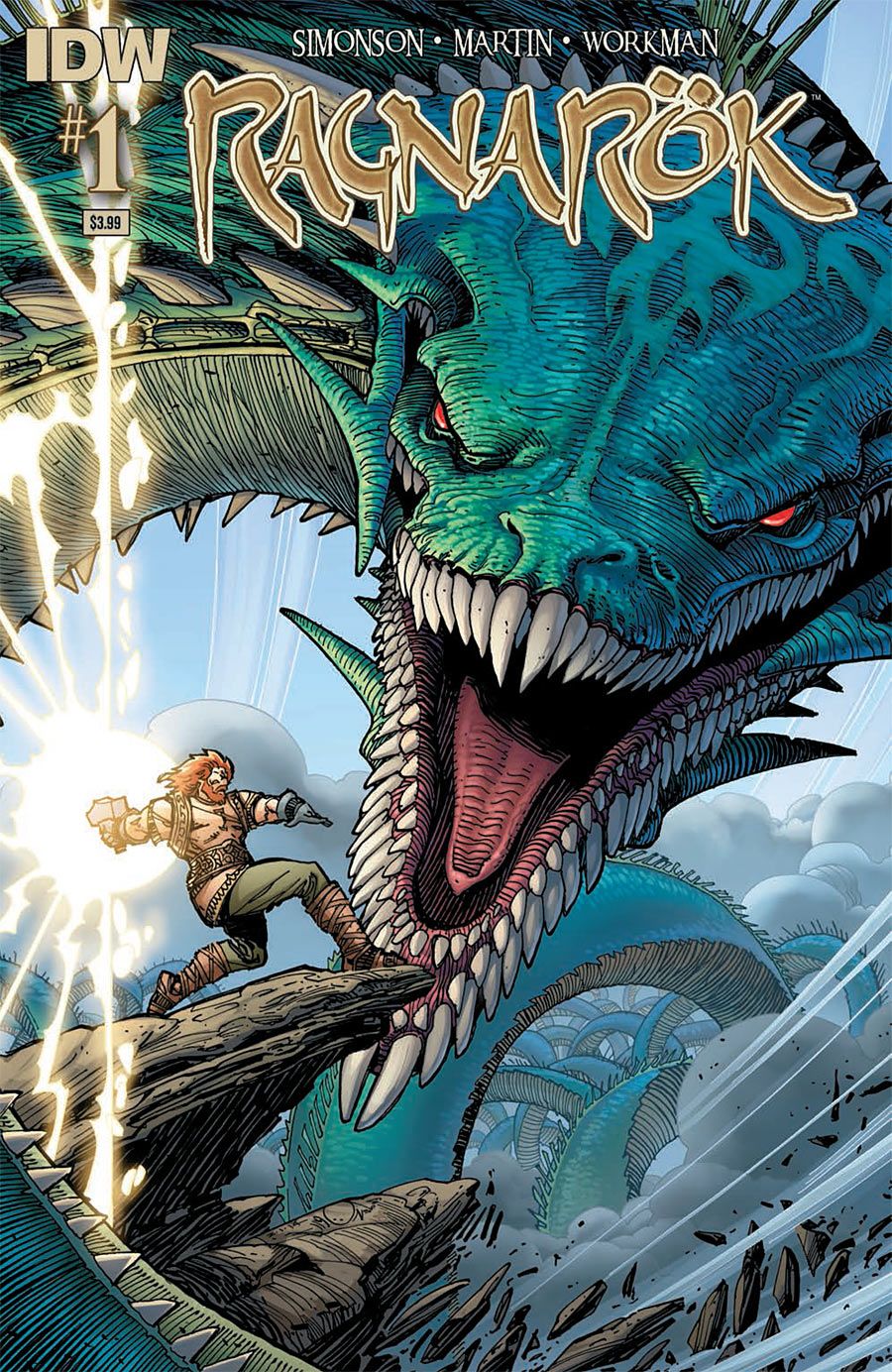Walter Simonson's welcome return to epic fantasy and Norse-inspired saga, "Ragnarok" #1 is a creative, massively confident first issue that makes no apology for its source material or genre. Fast-moving and neatly plotted, it's a lively, readable adventure that got me right into the world. Readers who'd rather that their comics push the bounds of epic fantasy won't be won over, but those who just want a fine example of the form would be hard-pressed to outdo "Ragnarok" #1.
The book's point-of-view is made clear from the get-go. "Ragnarok" #1 has one of the most boldly esoteric openings I've read in big-publisher comics: a stream of translations from the Elder (Poetic) Edda, kenning and all, set over a sprawling rendering of Ragnarok. These are some seriously gorgeous pages, but the reader is expected to roll with a 13th century text as her narrator. It's a get-on-board-with-epic or get out situation.
From there, the protagonist is introduced as a blue-skinned elf assassin on a quest to kill a dead god -- so, seriously, get on board with the epic. Admittedly, the god-killing premise and its plotting are pretty standard, with the requisite gathering of a crew and journeying to a mythic destination. However, Simonson's made it interesting, because the god in question is (ostensibly) Thor and the assassin, Brynja, works in service of the Great Enemies. The inversion of the Eddas' own hero-villain dynamic is fascinating, and Simonson raises real questions about point-of-view. The title page, in first person, is clearly written from one of the fallen gods, but Brynja is the reader's lens into the story, a mother trying to secure immortality and ease for her daughter. So who should the reader root for?
It's complicated, because as assassins go, Brynja is made easy to root for. Though, refreshingly, she's the one who goes out questing while her husband stays home with their daughter, Simonson spends pages on her domestic life. She's shown easing her daughter to sleep, kissing her husband and planning for the family's future. On the road, she isn't simply skilled but sly. When she sees a mutineer about to kill himself with his own idiocy, she just lets him.
Perhaps the greatest strength of the issue, though, is Simonson's reliably great art. The man knows how to draw monsters and battles, and Laura Martin's colors provide clear moods and interesting visuals. For instance, the opening battle scene from the Edda is almost washed out in light orange inks and colors, making it feel like a world bathed in fire. From Jörmungandr's smirking face, like a blunt arrowhead, to the body language of the warriors, these are full, energetic pages and a treat to read.
More importantly, Simonson seems to know his strengths. His work has a phenomenal sense of action and forward motion; he's much better at drawing strides and leaping horses than facial expressions, so his characters are always doing something. Rarely are they at rest or simply talking. Martin adds to their world with deep colors that do summon images of twilight and winter, but a livable twilight rather than a post-apocalypse.
All told, "Ragnarok" #1 is an exciting start that's got me itching for September.

